LOOSE DIAMONDS
Loose Diamond Proportion
Magic of Radiant, Dispersion and Spectacular Reflection
This page is specifically designed to educate the buyers about loose diamonds so that they can select the diamond for engraving in their ring. Here, diamond proportion is an important feature to consider while buying diamond. Radiant, dispersal, and specular reflection are three distinct attributes that well-cut diamonds exhibit. Firstly, when light enters a diamond’s surface, it will either penetrate the stone or reflect off its polished table. Secondly, the flash of white light one gets while staring at a stone is the diamond’s brilliance, which is the light that is reflected. Lastly, some light beams split up into bursts of colour as they pass through a stone, a phenomenon known as scattering.
The GIA polish grades for loose diamonds are as follows:
Firstly, fire is the product of dispersion, which is the division of white light into its spectrum hues. Secondly, scintillation is the phenomenon of colour flashes that can be seen when a diamond is moved back and forth by the viewer and it is called Dispersion. Thirdly, grades for diamond polish are determined by how smoothly each facet is cut. Lastly, to evaluate the diamond’s polish grade, a gemologist examines it under magnification. Therefore, we advise purchasing diamonds with polish ratings of Excellent, Very Good, or Good. However, poor and fair polish diamonds won’t reflect light as well and could seem dull.
Loose Diamonds Fluorescence – Grades of Diamond Polish
All diamonds fluoresce, right?
Contrary to all myths but sadly diamonds don’t all glow. Therefore, the grading report will indicate the diamond’s fluorescence as either inert or none, if it does not fluoresce.
What Kinds of Diamond Fluorescence Are All there?
Fluorescence intensity ranges from faint to medium to strong to extremely strong. Specifically, faint refers to a faint glow that is challenging to discern under UV light, while very strong refers to how intensely and clearly the diamond glows when exposed to UV light. In addition, although blue is the most typical hue, fluorescence may also come in other colours. It’s worth noting that a fluorescent diamond may also display the hues yellow, green, and white.
Shapes of Loose Diamonds
Loose Diamonds come in different shapes that are discussed as follows:
-
Princess
-
Marquise
-
Pear
-
Asscher
-
Heart
-
Oval
-
Cushion
-
Radiant
-
Round
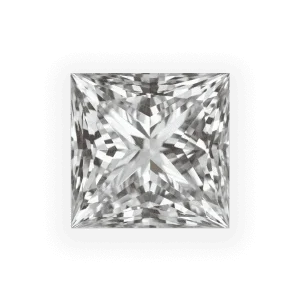
A superb engagement ring may be made with princess cut diamonds because of their exceptional clarity. Specifically, they are an exotic gem due to their superb form, which was created to maximize the brilliance of their square cut. However, it is essential to make sure that the four pointed corners of the princess cut diamond you buy are shielded by the ring’s setting. Importantly, this will help to protect them from chipping, which can occur more easily because of their shape. Interestingly, the princess cut diamond allows faults to be more tolerable, making it a popular choice for those seeking a high-quality diamond with a lower price tag.
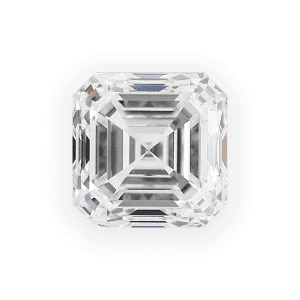
A “traditional” design for diamond engagement rings is the Marquise-Cut Diamond, a dazzling stone with a boat-like shape. However, when it comes to this particular style of cut, color scheme and brilliance are the two most crucial attributes, as they are in all “fancy cut” diamonds. Somehow, the Marquise-Cut Diamond is cut similar to a Round Brilliant Diamond, but the diamond cutter lengthens the gemstone into its distinctive “boat-shape” to enhance the diamond’s carat weight. Whereas, this approach permits them to eradicate each imperfection while conserving the bulk of the beautiful diamond.
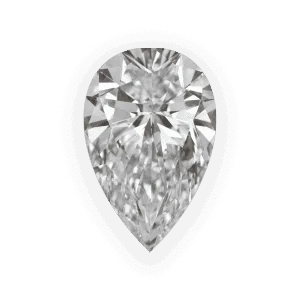
The Pear Shaped Diamond is an uncommon diamond that may nevertheless make light “dance” as it does in the classic Round Brilliant Cut by fusing the history and brilliance of a round cut with a less typical form. However, given that its size and proportions are essentially a matter of personal preference, it is arguably the most debatable diamond form. Interestingly, the diamond typically has 58 facets, which allows light to travel through it in a manner similar to that of a Round diamond. Nonetheless, it stands out more due to its uncommon form, which adds a unique touch to any piece of jewelry.
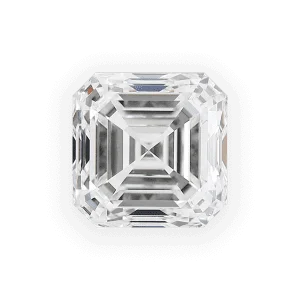
The step-cut Asscher Cut Diamond, commonly known as a “Square Emerald-Cut,” has cropped corners and is created following this method. Interestingly, an Asscher Cut Diamond first seems practically octagonal due to the chopped corners. However, they have a clean, sparkly, and brilliant look that distinguishes them from other diamond cuts. Additionally, they have the same purity of glacier-water ice as Emerald-Cut Diamonds, which allows you to look completely through the stone. However, it's worth noting that it is crucial to get an Asscher Cut Diamond that is perfect or as near to flawless as possible because inclusions are visible to the human eye in Asscher Cut Diamonds.
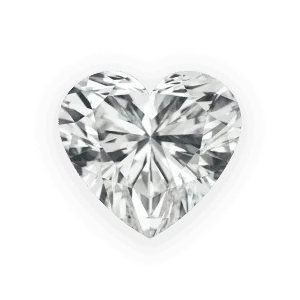
The top of the heart-shaped diamond has a split, and it glows magnificently. Undeniably, among the diamond forms, it is one of the most romantic, making it a popular choice for engagement rings and other sentimental jewelry. However, choosing a diamond with a heart shape requires careful consideration of its proportions and symmetry. Since two sides of the heart have to be identical, harmony is fundamental when picking a diamond with a heart shape. The two lobes should be well divided, and the wings should be rounded to achieve a symmetrical look. Interestingly, less than .50 carat heart-shaped diamonds are often not a wise choice because they have a smaller appearance than other diamond shapes, particularly when prong-set. Nevertheless, small heart-shaped diamonds work well in bezel and three-prong settings, making them an excellent choice for certain types of jewelry.
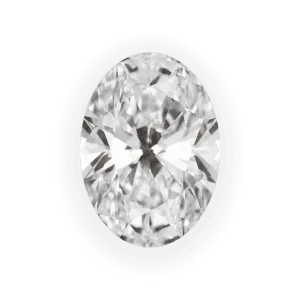
The most common cut, the Round Brilliant, has been tweaked to create the Oval Cut Diamond, which is an excellent alternative for those seeking something unique yet comparable in quality to the Round “Ideal” Cut. The Oval Cut Diamond retains the round cut's brilliance and sparkle while presenting a different shape. Interestingly, it is the ideal option for purchasers who desire qualities comparable to those of the Round “Ideal” Cut but would like something in a more unique shape. Additionally, the oval shape of the diamond gives the illusion of length, which can beautifully lengthen fingers when worn as a ring.

The antique cushion cut diamond has a timeless, romantic charm, making it a popular choice among diamond enthusiasts. This cut is regarded as a hybrid between a contemporary oval-cut diamond and the Old Mine Cut, which gained popularity in the mid-19th century. Unlike modern cuts, the Old Mine Cut had broad facets and rounded edges, which were created to capture the splendor of candlelight. With 58 facets, the Cushion-Cut Diamond carries forward the essence of the Old Mine Cut while incorporating the modern features of diamond cutting.
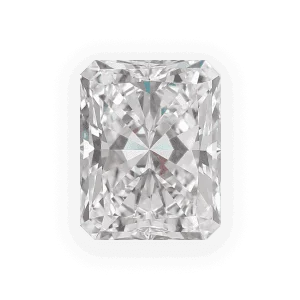
To create a unique diamond cut, Henry Grossbard combined the more traditional Round Cut with the more modern square or rectangular shape to create the Radiant Cut Diamond. This cut blends the techniques of the Round Cut and Emerald Cut diamonds to create a new and beautiful diamond. The goal was to preserve the beauty of each type of diamond while also creating something that had never been seen before on the market. The result was the creation of the Radiant Cut Diamond in 1977, which is truly one-of-a-kind.
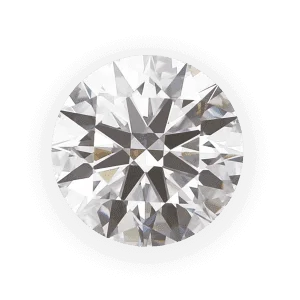
The most popular and timeless diamond shape is the Round Cut Diamond. With its characteristic circular outline and 58 precisely placed facets, also called a "brilliant" cut, it maximizes the stone's sparkle and brilliance. Furthermore, this cut accounts for more than 75% of all diamonds sold today, making it the most common diamond shape on the market.
How to Select Perfect Loose Diamonds for You?
Ideal Cut Diamonds
Select Diamond Colour
How to decide clarity grade?
Which Carat Weight is Right For You?
Reviews From Our Customers




